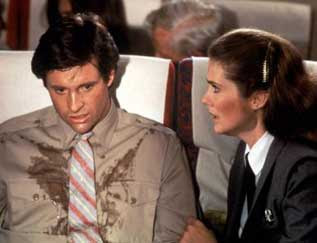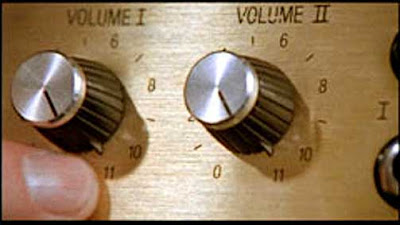My reverie was interrupted by the arrival of the Iron Man and Thing costumes. I was curious about the design of the former, which seemed oddly bulky to me. But I assumed Marvel was just taking a more kid-friendly approach with the Golden Avenger, as the suit was more indicative of the stuffed-animal variety, than the previous sleek, albeit uncomfortable, celastic version, which was a closer interpretation of Tony Stark’s iron apparel in the comic. I never made mention of my thoughts to Janzow because my job and chief concern was the functionality of the costumes, not their actual appearance. That was outside my jurisdiction.
The look of The Thing was spot-on, right down to his baby-blue eyes. Of course, it wasn’t chiseled from rock (Duh!), but the walking-mattress approach was more appropriate. And, although Ben Grimm’s stones were tightly covered with fabric, they were solid, not soft. Molded fiberglass or similar must have been used, each jaggedly-formed piece built upon the shell that housed the body parts like a three-dimensional jigsaw puzzle. The only component without any give was the head, which seemed molded from celastic—the same hardened material used in the helmet and body armor of the previous version of Iron Man—and painted a matching burnt orange. It descended partway down the neck before reverting to the same fabric that covered the rest of the body. Thus, it offered some mobility and tucked nicely into the torso, concealing the performer within.
 Notice the more simplistic design of The Thing from the Marvel Action Hour (left) compared to a typical comic book rendering of the character (right). Seldom do comic artists supply Benjamin J. Grimm with teeth, as depicted, more often opting for a simple black maw
Notice the more simplistic design of The Thing from the Marvel Action Hour (left) compared to a typical comic book rendering of the character (right). Seldom do comic artists supply Benjamin J. Grimm with teeth, as depicted, more often opting for a simple black mawThe only fault I could see with The Thing’s design was the dearth of rocks. The character should resemble an anthropomorphic pile of rubble. The costume was more like the remains of a collapsed slate roof. That’s when it hit me. Janzow must be working off characters breakdowns from the new cartoon, not the comic books! When animating, detail costs money.
 Hanna-Barbera pioneered the streamlining of cartoons in order to save time and maximize profits in the television medium. They not only utilize less cels per second, but reuse backgrounds—ever notice the same trees and shrubs passing in the background when the Ranger is chasing Yogi—and all their character designs are simplistic. To render The Thing as he is depicted in the comic books would increase the animation process geometrically. The Iron Man outfit would logically emulate the cartoon version of the Golden Avenger in the same manner, which, judging from the suit, would suggest that the animated rendition is grossly exaggerated (My theory would later prove true.).
Hanna-Barbera pioneered the streamlining of cartoons in order to save time and maximize profits in the television medium. They not only utilize less cels per second, but reuse backgrounds—ever notice the same trees and shrubs passing in the background when the Ranger is chasing Yogi—and all their character designs are simplistic. To render The Thing as he is depicted in the comic books would increase the animation process geometrically. The Iron Man outfit would logically emulate the cartoon version of the Golden Avenger in the same manner, which, judging from the suit, would suggest that the animated rendition is grossly exaggerated (My theory would later prove true.). Here, too, the design of the cartoon version of Iron Man (right) is far less detailed than the comic-book iteration (left) on which the animation is based. Also, take note of the bulkier interpretation of the armor
Here, too, the design of the cartoon version of Iron Man (right) is far less detailed than the comic-book iteration (left) on which the animation is based. Also, take note of the bulkier interpretation of the armorThere was no need to hie to a changing room—not that there was one. The costumes were constructed so that wearers could don them while in shorts and a T-shirt, my current ensemble.
 The Iron Man suit was first. The pants were designed like a fireman’s, albeit far more snug, with thick canvas suspenders built into the inner waistband attached and adjusted by Velcro at the shoulders. I hoisted the chest cavity onto my frame, inserting my arms from the back, the way one might be strapped into a strait jacket, though Houdini would have found it a challenge to escape its confines. The horizontal zipper that ran along the spine was hidden by overlapping fabric. The waistband similarly extended over the area where it met the torso, nicely attaching with Velcro to conceal the demarcation line.
The Iron Man suit was first. The pants were designed like a fireman’s, albeit far more snug, with thick canvas suspenders built into the inner waistband attached and adjusted by Velcro at the shoulders. I hoisted the chest cavity onto my frame, inserting my arms from the back, the way one might be strapped into a strait jacket, though Houdini would have found it a challenge to escape its confines. The horizontal zipper that ran along the spine was hidden by overlapping fabric. The waistband similarly extended over the area where it met the torso, nicely attaching with Velcro to conceal the demarcation line.Boots were stepped into with unshod feet and the snug fit reminded me of wearing bunny slippers or similar novelty bedtime footwear… er… not that I would have any personal knowledge of such. Then the helmet was placed, while the wearer’s hand were still unencumbered, leaving the gloves as the final component. I felt as if I had just been upholstered. Still, the suit was comfortable—the temperature of which notwithstanding—and allowed the user a surprising bit of mobility, as far as these types of costumes go.
The user’s vision—accessed through the finely screened eye and mouth apertures of the helmet—was no more-or-less impaired than suits of a similar ilk. The yellow of the screening gauze effecting a jaundiced view of the world for the actor within. Claustrophobics need not apply!
A peek in the large standing mirror to one side of the floor, revealed an odd interpretation of Marvel’s iron-clad hero and further confirmed the difficulty in translating certain characters from two to three dimensions. Iron Man, as depicted in the comics, is essentially a human form over which is drawn a suit of armor. Little regard is taken for the outfit’s bulk—which even at its most-advanced—would still thicken the overall musculature of the character’s body shape. Envision the knights of olde, their appearance before and after they don their metal ensemble. There is a degree of klunkiness that cannot be helped. As uncomfortable as the original version of the Iron Man costume was, It was as close as possible to the sleekness of the suit as presented in the comic books.
 Shafton’s larger-than-life translation exaggerated the bulkier sections of the suit, such as the chest plate, boots and helmet. The result: a top-heavy, seemingly squashed version of Iron Man that more closely resembles the design of the characters in Marvel’s current The Superhero Squad Show or the muscle-bound rival of Daffy Duck’s in the Warner Brothers’s short “Muscle Tussle.” If Marvel were to drag the costume out of mothballs to once again use at appearances, it would probably go over quite well today. But at the time of its debut, it was looked upon with
Shafton’s larger-than-life translation exaggerated the bulkier sections of the suit, such as the chest plate, boots and helmet. The result: a top-heavy, seemingly squashed version of Iron Man that more closely resembles the design of the characters in Marvel’s current The Superhero Squad Show or the muscle-bound rival of Daffy Duck’s in the Warner Brothers’s short “Muscle Tussle.” If Marvel were to drag the costume out of mothballs to once again use at appearances, it would probably go over quite well today. But at the time of its debut, it was looked upon with  derision. I suspected as much, despite my thinking Shafton had conceived a fun, kid-friendly version of Shellhead, which in turn was what I assumed Marvel was going for. As for the suit’s usability, the judging of which was my role in this Grand Guignol, it was aces.
derision. I suspected as much, despite my thinking Shafton had conceived a fun, kid-friendly version of Shellhead, which in turn was what I assumed Marvel was going for. As for the suit’s usability, the judging of which was my role in this Grand Guignol, it was aces.The Thing costume, by contrast, couldn’t have been more perfectly envisioned, right down to his tight blue Fantastic Four shorts, which Janzow created so as to be removed and washed separately, so The Thing’s… uh, er… thing could always have a hygienic home. The outfit’s pieces were donned much like those of the Iron Man outfit. Unlike the former costume, however, the hands of The Thing suit were part of the torso and non-moving, thus effecting longer appendages that better fit the proportions of the rock-hewn member of the Fantastic Four. The wearer’s hands nestled in the metacarpal region of the outfit, but not extending into the fingers, thus laying the lion’s share of the arm-lifting squarely on the actor’s wrists.
Less than a half dozen lifts of the costume’s sizable arms and the strain on my wrists was unbearable. Try doing shoulder shrugs at the gym with ten-pound plates wresting on your wrists and you’ll get a better idea of my discomfort. The central handle of barbells distributes the effort into the forearms, thus affording better lifting form and concentration into the shoulder area. I explained the problem to Janzow and asked if it would be possible to build handgrips into the hands of the suit.
To hide the chest cavity zipper and retain the erratic nature of the Thing’s rocky physique, Janzow cleverly designed the plates along the spine of the costume to fold over the zipper, interlocking with the neighboring slabs and snapping into place. Even upon close inspection, there wasn’t any way to tell how the torso was assembled onto the actor.
The Thing’s titanic tootsies posed another problem, their size and heft necessitating that sneakers be worn for proper stability and to prevent ankle injury. But the padding was too thick—more like that of Iron Man’s booties—and offered too limited a space to allow for both feet and footwear. D’ya ever try on a new pair of shoes, only to discover their additional padding stuffed in the toes? The solution to the Thing’s feet was modestly more difficult in that re-stitching would be required once the stuffing was ripped out.
 Surprisingly, the visibility of the Thing’s headpiece was better than one might suspect due to the character’s stony configuration. Since his earliest delineation by the great Jack Kirby, the Ever Lovin’ Blue-Eyed Thing’s mouth has ever been drawn much like a muppet’s: a straight horizontal split along the bottom half of the face, as if someone had taken an ax to his loveable mug, stopping after the first swing didn’t quite cut through. When applied to a costume of Bashful Benjamin J. Grimm, the wearer is presented a wider landscape through which to look. This reduces the need for the actor to rotate his whole body to see what is approaching from either side. Of course, the vertical optic area was typically small, but the increased horizontal visibility made being enclosed in the suit seem less claustrophobic.
Surprisingly, the visibility of the Thing’s headpiece was better than one might suspect due to the character’s stony configuration. Since his earliest delineation by the great Jack Kirby, the Ever Lovin’ Blue-Eyed Thing’s mouth has ever been drawn much like a muppet’s: a straight horizontal split along the bottom half of the face, as if someone had taken an ax to his loveable mug, stopping after the first swing didn’t quite cut through. When applied to a costume of Bashful Benjamin J. Grimm, the wearer is presented a wider landscape through which to look. This reduces the need for the actor to rotate his whole body to see what is approaching from either side. Of course, the vertical optic area was typically small, but the increased horizontal visibility made being enclosed in the suit seem less claustrophobic.The whole procedure—from meeting Janzow to trying on the suits—took less than two hours. It was still early afternoon and I expected to spend the rest of the afternoon twiddling my thumbs in my room back at the motel-out-of-time. Perhaps I’d do some laps in the bathtub the inn calls a swimming pool, which would be much like running laps in a phone booth.
NEXT: The Eighth Wonder of the World

































